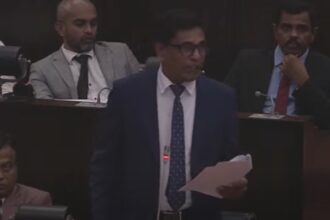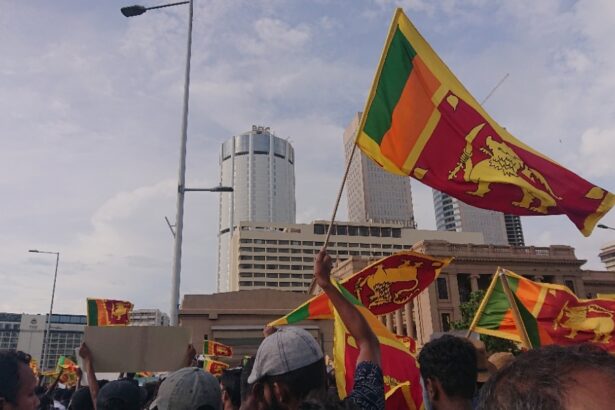Factum Perspective: From “People-Friendly” to “Friends-Friendly” – Democratic Governance in South Asia
By Rear Admiral Y. N. Jayarathna (Retd)
The people’s uprising in Bangladesh against the Sheikh Hasina government has become an eye-opener for South Asia. It may mark not the end, but the beginning, of a cascading flow of events destined to unfold in our neighbourhood.
This analysis is based on the trends and patterns on offer for the so-called democratic governance in South Asian countries which have boasted of free and fair elections since their independence. Democratic governments came to power claiming to be people- friendly prior to elections, but later ended up becoming friends-friendly, by forging close alliances with those friendly to the people in power.
Democracy has many models and what we in South Asia have inherited is primarily a system nurtured and evolved in the West. It is clear the real world is not working within this framework. In Gaza, for instance, it is clear that the US and its allies want to see the United Nations stay down and operate as a mere body without exercising jurisdiction or control in places the West does not wish it to go to.
Along the way, the democracies of South Asia also have reshaped the meaning of democracy, whereby governments have established themselves and continued to remain in power for decades on the strength of the ballot.
The South Asian region has been subjected to the governance of politicians who were very people friendly during election time but became “friends-friendly” after being elected. That is where the corruption and nepotism started to creep in, as evident discernibly in Sri Lanka. It is the same in Dhaka, with Bangabandhu loyalists believing it to be their entitlement to get bigger shares of election spoils.
These are classic case studies for democracy failing to meet wide public aspirations despite lavish infrastructure development. The region saw these trends during the crisis in Sri Lanka and Bangladesh was quick enough to adjust its financial standing so as not to face a similar situation. What they failed to account for was that the people’s uprising would come not on account of mere financial mismanagement but rather on account of the government’s colossal failure of public trust.
This is somewhat similar to what happened in Sri Lanka, where supporters of the then incumbent thought they could take the law into their hands when people began rising up against economic and political mismanagement. In both Sri Lanka and Bangladesh, people-friendly governance has given way to people-led protests.
The role of media in widening the gap
During the Bangladesh uprising the Indian media portrayed the protests as an anti-Hindu movement. That may have fitted in with popular narratives in India, but it only served to deepen divisions in the long term.
There is no doubt that media coverage is important, that what is happening in the region is significant and a matter of concern for all. Yet the question is whether these events needed to be presented in a provocative manner. If at all, it has helped reinforce anti-Indian narratives and sentiments throughout the region.
It is notable that politicians and media outlets of the highest standing have deigned to play the nationalist card. During the recent change of government in the Maldives, for instance, a minor incident involving the remarks of local politicians on social media was ballooned by Indian media to create the impression that the Maldives had tilted against Delhi. Rather ironically, it is the Indian media rather than the Maldivian government that seems to have taken pains to show the current government in Male as anti-Indian. Such examples illustrate how India appears to have lost control of popular perceptions in its immediate neighbourhood.
Imploding because of internal issues
If South Asia does not do its homework to course correct and to stay connected as a region, external factors will begin to weigh in. The effects of this will be noticed in the Bay of Bengal (BoB), which compared to the Arabian Sea is still a closed-door affair for and between countries like India, Sri Lanka, and Bangladesh.
The question should be asked here, as to whether we would want to open the Bay of Bengal to external parties, or whether we would do better to resolve and defuse tensions within the region by ourselves, using good common sense.
At present, what we need is to focus on common areas of interests so that we retain our control and ownership, so to speak, of the region. Governments need to start addressing their own populace first, and then turn to other countries in the region. No region will benefit from fostering suspicion and hatred. The boycott on Maldivian tourism brought about by Indian media is a classic example of this.
If we do not course correct, SAARC, already crippled by divisions, will be set to divide further, at a time when it needs to be unified. The Taliban takeover of Afghanistan in August 2021 made SAARC vulnerable to extremist elements. Yet without proper unity, can SAARC contain or even confront this challenge?
Political elites in the region will have to move fast. Advancements in warfare and technology in Ukraine and in Gaza demonstrate that the old notion of borders is now useless, that non-state actors are becoming ubiquitous in world affairs.
Harping on about an outside hand
Whenever anti-government sentiments arise, conspiracy theories tend to take high precedence. These theories, all of which are uniform in attributing the fall of governments or political elites to major powers and their conniving in regime change operations, tend to be unnecessary distractions.
One distinctive feature of all these conspiracy theories, which tend to be parroted like a prayer after a party or individual is ousted from power, is that they are used to cover a particular party’s or individual’s colossal failures. The takeaway from this is that regardless of external interventions, if governments do not meet try to meet people’s aspirations, there will be protests. This trend is visible in Sri Lanka, Maldives, and Bangladesh. It may well crop up in India too.
In view of these developments in South Asia, political elites and policymakers need to adjust and embrace people friendly measures, consolidating credibility and trust. There is a need now to focus on the next generation for the next five or six years, to recognise the power and potential of the youth. South Asia is not going to be same again. It is time its political and policy elites understand this, and acknowledge it.
Rear Admiral Y. N. Jayarathna (Retd) was the Chief of Staff and Chief Hydrographer of the Sri Lanka Navy and Joint Chief Hydrographer to the Sri Lankan Government. On retirement his services have been secured by the United Nations as an International Consultant for Undersea Cables. He is presently engaged in consultancy role on matters maritime on freelance basis. He can be reached at [email protected].
Factum is an Asia-Pacific-focused think tank on International Relations, Tech Cooperation, and Strategic Communications accessible via www.factum.lk.
The views expressed here are the author’s own and do not necessarily reflect the organization’s.
The post From “People-Friendly” to “Friends-Friendly” – Democratic Governance in South Asia appeared first on Newswire.



